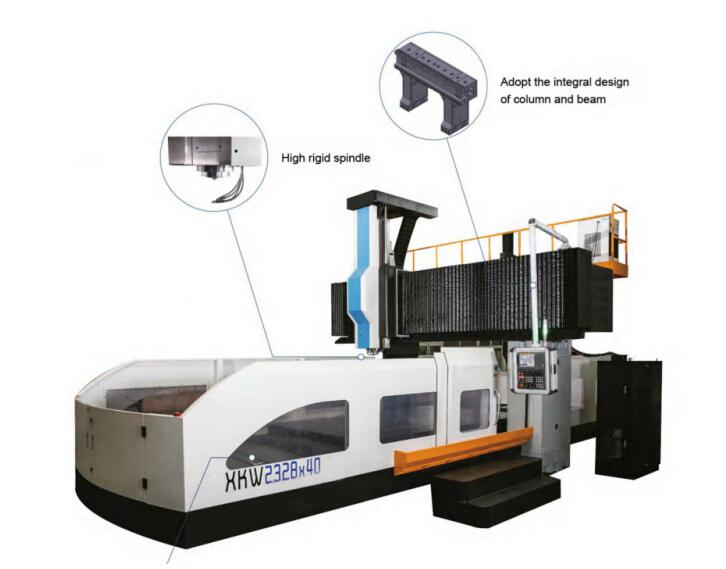1. Grinding the outer circle
The outer circle of the workpiece is generally ground on an ordinary cylindrical grinder or a universal cylindrical grinder. Cylindrical grinding generally has three methods: longitudinal grinding, horizontal grinding and deep grinding.

1. Longitudinal grinding method When the longitudinal grinding method grinds an outer circle, the high-speed rotation of the grinding wheel is the main movement. While the workpiece is in circular feed motion, it also moves longitudinally with the worktable to achieve axial feed along the workpiece. At the end of each single stroke or each reciprocating stroke, the grinding wheel performs periodic lateral movement to realize the feed along the radial direction of the workpiece, thereby gradually grinding away all the remaining grinding allowance in the radial direction of the workpiece. After grinding to size, a smooth grinding process without lateral feed is carried out until the spark disappears. Because the longitudinal grinding method has a small amount of radial feed per time, the grinding force is small, and the heat dissipation condition is good, it fully improves the grinding accuracy and surface quality of the workpiece, and can meet the higher processing quality requirements, but the grinding efficiency is low . The longitudinal grinding method is suitable for grinding larger workpieces and is a common method for single-piece and small-batch production.
2. Horizontal grinding method When the horizontal grinding method is used to grind the outer circle, the width of the grinding wheel is larger than the grinding width of the workpiece, and the workpiece does not need to make longitudinal (workpiece axial) feed motion. The grinding wheel is continuously or intermittently at a slow speed. Along the horizontal feed movement, the radial feed of the workpiece is realized until the grinding reaches the size requirement. Its characteristics are: give full play to the cutting ability of the grinding wheel, high grinding efficiency, and also suitable for forming grinding. However, the large contact area between the grinding wheel and the workpiece during the grinding process increases the grinding force and the workpiece is prone to deformation and burns. In addition, the shape error of the grinding wheel directly affects the geometric accuracy of the workpiece, the grinding accuracy is low, and the surface roughness value is large.
Therefore, a high-power, high-rigidity grinder must be used, and sufficient cutting fluid must be given to achieve the purpose of cooling while grinding. The use of the horizontal grinding method requires the rigidity of the process system to be good, and the workpiece should be short rather than long. This kind of grinding method is usually used for the fine grinding process of the short stepped shaft journal.
3. Deep grinding method Deep grinding method is a relatively advanced method with high productivity, and the grinding allowance is generally 0.1~0.35mm. In this way, the entire margin can be ground in one pass. When grinding, the feed rate is relatively small. Generally, the longitudinal feed rate is 1~2 mm/r, which is about 15% of the “longitudinal grinding method”, and the processing time is about 30~75% of the longitudinal grinding method.
2. Grinding the end face
On a universal cylindrical grinder, the end face of the grinding wheel can be used to grind the shoulder surface and end plane of the workpiece. Before grinding starts, the end face of the grinding wheel should be slowly approached to the end face of the workpiece to be ground. During the grinding process, the axial feed of the workpiece should also be small. This is because the rigidity of the end face of the grinding wheel is very poor and basically cannot withstand large axial forces. Therefore, the best way is to use the outer conical surface of the grinding wheel to grind the end face of the workpiece. At this time, the worktable should be pulled Larger angle.
3. grinding the inner circle
The internal grinding tool of the external cylindrical grinder can grind the inner circle of the workpiece. When grinding the inner circle, most of the workpiece is the outer circle or the end surface as the positioning reference, and it is clamped on the chuck for grinding. When grinding the inner conical surface, only the inner grinding tool needs to be deflected by a circumferential angle.
Unlike external grinding, when internal grinding, the diameter of the grinding wheel is limited by the aperture of the workpiece, which is generally small, so the grinding wheel wears quickly and needs to be repaired and replaced frequently. The grinding wheel used for internal grinding is softer than the grinding wheel used for external grinding. This is because the contact area between the grinding wheel and the workpiece is larger during internal grinding. In addition, the diameter of the grinding wheel shaft is relatively small, the overhang length is large, and the rigidity is poor, so the grinding depth cannot be large, which reduces the productivity.


